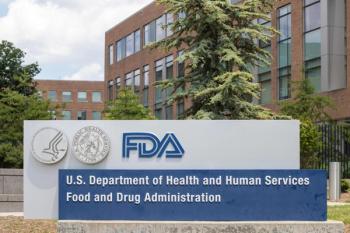
States With Drug Monitoring Programs See Fewer Prescriptions, Hospitalizations
Researchers at Weill Cornell Medicine have found that states requiring prescribers and dispensers to register with and use prescription drug monitoring programs saw significantly fewer opioid prescriptions and reduced opioid-related hospital use, when compared to states with weak drug monitoring program mandates.
Researchers at Weill Cornell Medicine have found that states requiring prescribers and dispensers to register with and use prescription drug monitoring programs saw significantly fewer opioid prescriptions and reduced opioid-related hospital use, when compared to states with weak drug monitoring program mandates.
Drug monitoring programs are state-based electronic databases that collect and monitor prescribing and dispensing information of controlled prescription drugs.1 Currently, 37 states have operational monitoring programs, and 11 states have enacted legislation to establish a program, which is not fully operational.2
The researchers noted that monitoring programs vary by state. Some have mandates requiring all providers to register and use the program on initial prescribing, regardless of practice setting. They can also require use of the program every 12 months after initial prescribing for continuing prescriptions. Other states may have noncomprehensive mandates that only require registration, or have a weak use requirement, or both.1
In the study, researchers found that states with comprehensive mandates had an 8.92% reduction in the number of opioid prescriptions, in addition to 4.27% fewer hospital stays and 17.75% fewer emergency department visits related to opioid use. States with noncomprehensive mandates saw no reduction in these areas.1
The approximate annual reduction of about 12,000 inpatient stays and 39,000 emergency department visits could save an estimated $155 million a year in Medicaid spending.1
The researchers used opioid prescription data reported by states to the Centers for Medicare and Medicaid Services and opioid-related hospital data from the Agency for Healthcare Research, and Quality's Healthcare Cost and Utilization Project. The data analyzed was from the first quarter of 2011 to the last quarter of 2016.1
"Our findings contribute significant evidence in support of comprehensive mandates for reducing the use of opioid prescriptions by Medicaid patinets, who have a much higher risk for opioid misuse and overdose compared to patients covered by other insurers," said senior author Yuhua Bao, PhD and an associate professor of health care policy and research at Weill Cornell Medicine.1
References
- Comprehensive Mandates for Prescription Drug Monitoring Programs Reduce Opioid Prescriptions and Hospital Use. WCM Newsroom. https://news.weill.cornell.edu/2019/09/comprehensive-mandates-for-prescription-drug-monitoring-programs-reduce-opioid. Published September 3, 2019.
- State Prescription Drug Monitoring Programs. Diversion Control Division. https://www.deadiversion.usdoj.gov/faq/rx_monitor.htm.
Newsletter
Stay informed on drug updates, treatment guidelines, and pharmacy practice trends—subscribe to Pharmacy Times for weekly clinical insights.


















































































































































































































